Hello dear Gardenopolis readers –
Our prolonged, unplanned vacation is over. Our Gardenopolis party (3rd one, celebrating two years of Gardenopolis Cleveland) was a success, with 50 people attending, enjoying good food in beautiful surroundings, and the rain politely held off until closing hour. And now – drumroll here, please – co-editor Catherine is now the delighted new grandparent of a lovely little girl, Mira; co-editor Tom’s visiting grandchildren have returned to Chicago; and co-editor Anne has settled into a new living arrangement. Time for all of us to get back to work. I had hoped to have my interview with Cleveland Museum of Natural History’s Jim Bissell done by now, but I’m still working on transcribing it, so, not this time; instead I will share my mini-vacation visit to Ohio’s spectacular Hocking Hills.
I can’t believe I waited so long to visit this place (actually a series of places). I remember once as a teen going to a state forest down there to attend a forestry conservation camp. Alas, I was 15 and more impressed with the boys than with the scenery. LOL, as we say today. Then when I was studying landscape architecture at OSU, and the Hocking Hills were close, I was too busy. So the Hocking Hills have been on my bucket list for kind of a long time.
An explanation of the topography; It is all hills and valleys, ups and downs, with no seeming rhythm or natural order and no straight line roads. If you’re not used to the windy roads you might not want to drive after dark with the rising and falling multiple ssss curves, especially with some hot rod local in a semi’s-cab riding your car’s back end. Just off Rt.466 is the winner of the most-lethal-looking-driveway-entrance-to-a-school award, ever. Period. Why? Why? Why put an entrance to a school there?
Anyway, among those roads and tucked into those gnarly hills are wondrous places, cliffs and caves, and waterfalls, and grottos. Some of these spaces fight the camera — the cliffs, for example, and the caves. Without a human or human structure in the picture to give a sense of scale, they are just jumbles of rocks and trees, lacking depth perception.
We started, as I suspect most people do, with Old Man’s Cave, which, along with Cedar Falls, and the Ash Cave are probably the most popular and most visited of the natural attractions in the Hocking Hills (there are unnatural attractions, but we won’t go into them here). All this chaotic multitude of big and little hills drain water into twisty-rocky-cliffy little streams that drain into twisty-rocky-cliffy bigger streams, and eventually become twisty rivers — which drain, finally, into the twisty Ohio River). One of these little streams carved Old Man’s Cave, which is a huge recess cave, created by the wearing away of a softer layer of rock from between harder layers of rock – here sandstone. There is an upper falls, a trail downstream to lower falls into Old Man’s Cave, and then the trail follows the stream that meanders between the walls of a gorge for roughly a mile. You eventually get to Cedar Falls, misnamed. The first colonists mistook the trees, which are hemlocks, for Cedars. Then from Cedar Falls you can pick up another trail to the Ash Cave, the area’s largest recess cave, or across a fun small suspension bridge to Whispering Cave, almost as large, I’m told, as Ash Cave.
What was interesting, to me, was observing that the infrastructure of stairs and bridges and trails that encourages and supports intense public use of this place/space — most of it created by the CCC in the depression years of the early 30’s (and they did a spectacular job), though it is showing signs of wear and much use over some 80 plus years, has largely endured.
Old Structures
New Structures
One enjoys a mix of ‘artifacts’ – Mother Nature’s, on one hand, and man’s, on the other — and both are beautiful. The CCC artifacts sometimes incorporate the former and often feel organic, and stand in contrast to the more contemporary man made structures. On the negative side, this place shows the effects of so much love, of so much use. The paths, and beyond the paths, are worn, the soil is bare. There is little vegetation along the main pathways, other than the trees, and these often have their roots fully exposed. This is the inevitable erosion and compaction of the access path too much traveled, and that tempting short-cut too often taken. Everywhere there are the signs of our human insatiable curiosity (what’s up that ledge? What’s in that cave? Gotta see!). Interesting, too, to me, that not until four years ago was there a precipitation event that damaged this otherwise so durable man-made infrastructure.
We also went to a place called Rock House, a collapsed recess cave — impossible to photograph with one’s android phone) a little more off the beaten track. Much the same story of wear and tear there.
Contrast these with Conkle’s Hollow, within a similar gorge, but somewhat – considerably? — less visited, and considerably less worn down, located in a state nature preserve rather than a state park or state forest. Does this explain the difference? I can’t answer that question. We hiked both the loop rim trail (two miles, not counting the ups and downs) and the inside-the-gorge trail. The rim trail takes you close along the edge of 200 foot high cliffs, and even if you do not get vertigo and thus are brave enough to go right to the edges and look down, all you can see are the tops of the trees below. The footing is uneven, challenging. The east rim, which gets the western sun, seems drier. There is mountain laurel and briar edging the path among the hemlock trees. The west rim, which gets the eastern sun, seems wetter, shadier. It is more open and ferny.
The gorge itself is a religious experience! The path in and out is flat concrete that is handicapped accessible, and — thanks be to God, the ODNR, and the well placed fence — people largely stay on it. It helps that there are frequent signs asking one to stay on the trail to help preserve the vegetative ecosystem — ferns, ferns, ferns and more ferns, densely carpeting the steep slopes under the tall straight trees, clinging to the rock walls, growing on large stones, with lots of stinging nettle (don’t touch!) and little bit of a native broadleaved carex for contrast.
The air is moist, cool. There is a natural hush here, similar to what one felt during the recent eclipse. Perfect.
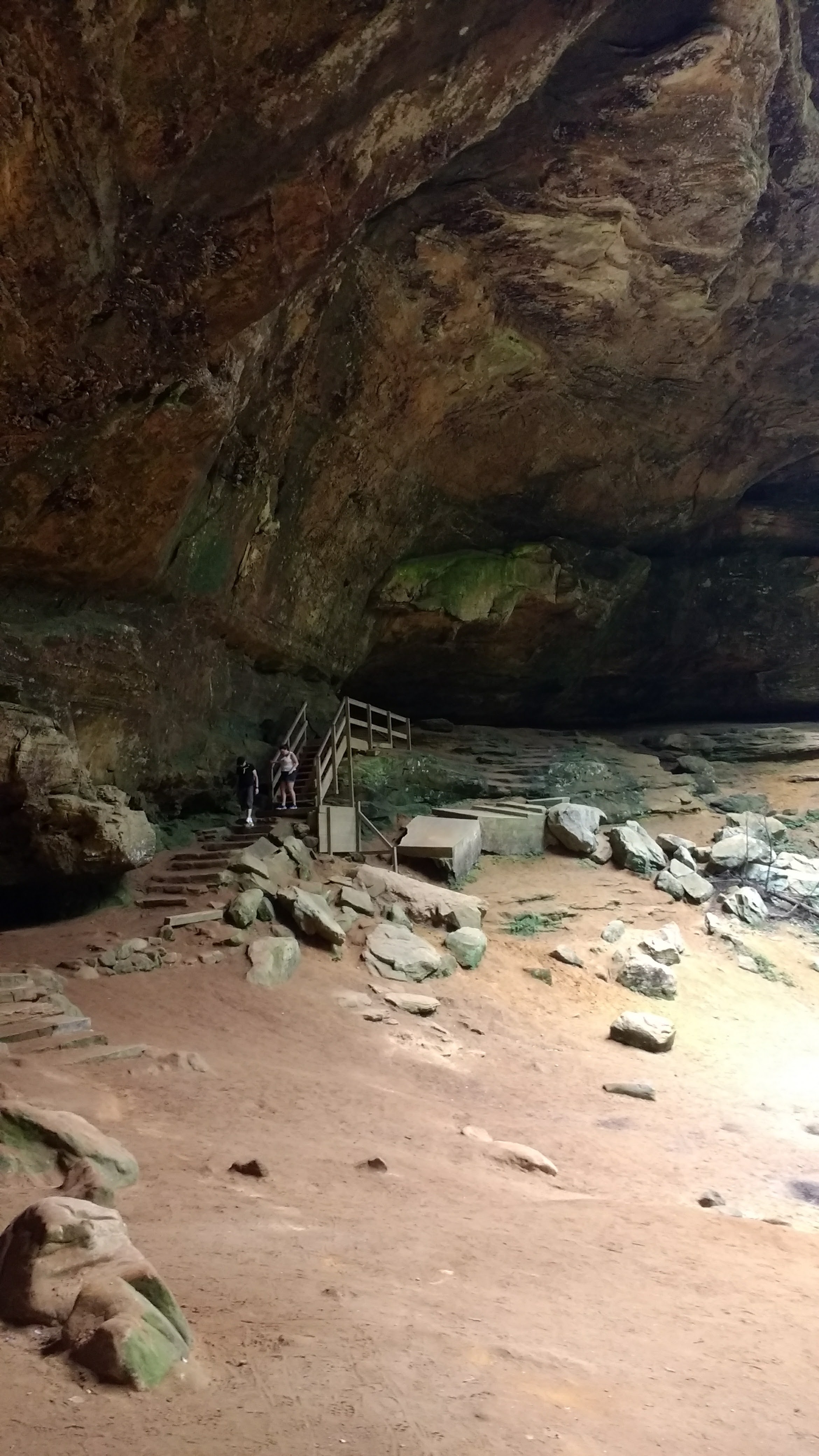
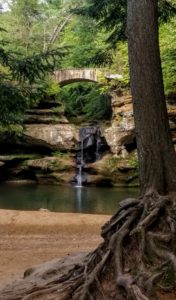
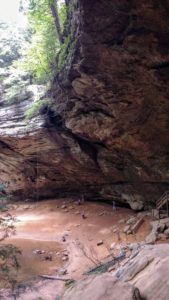
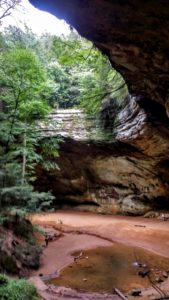
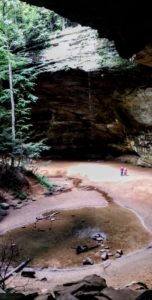
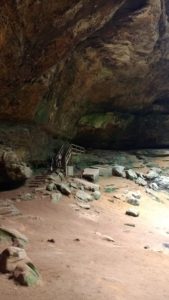
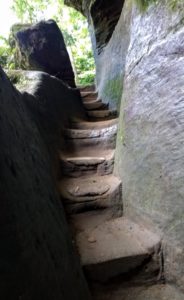
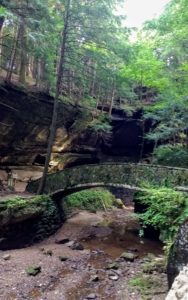
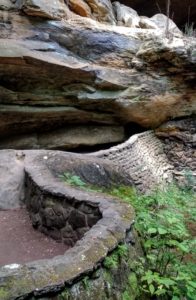
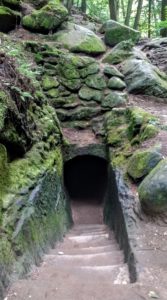
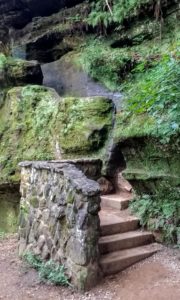
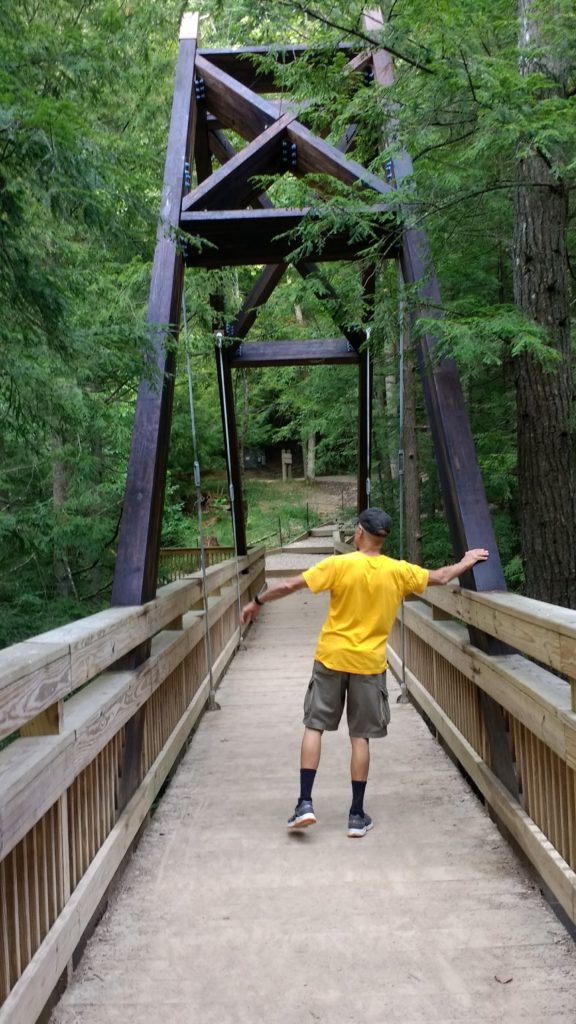
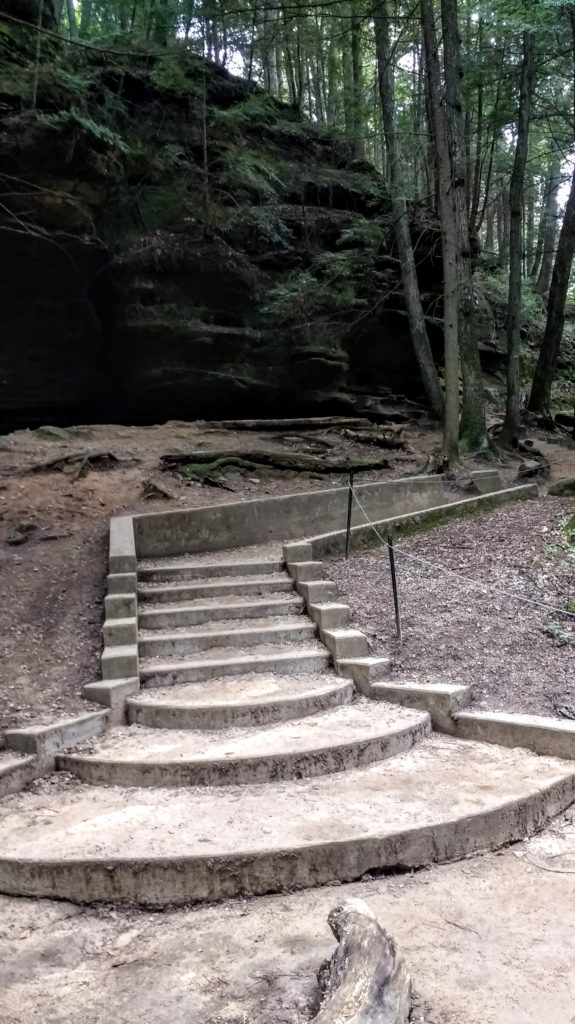
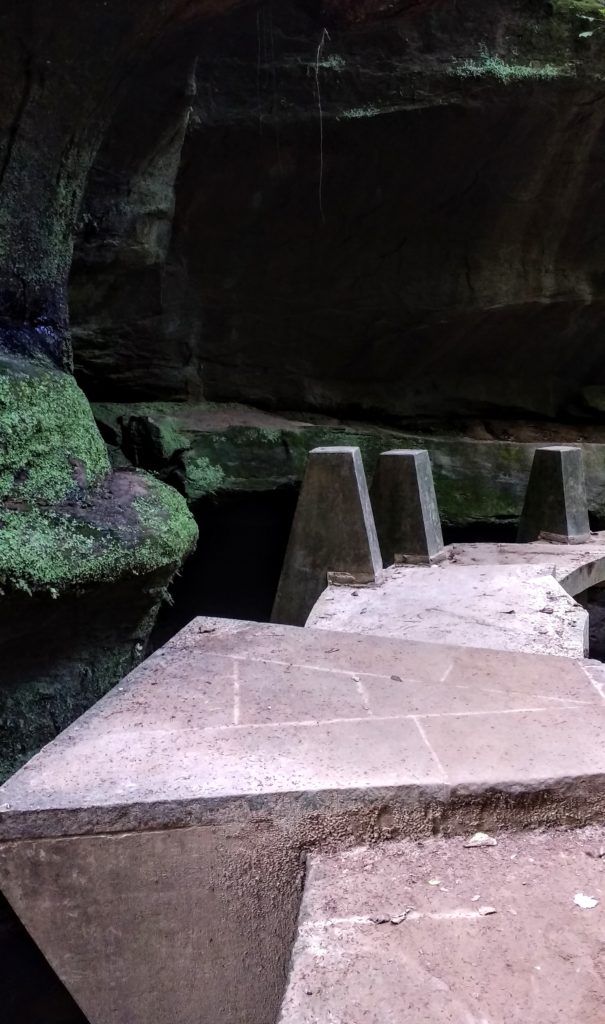
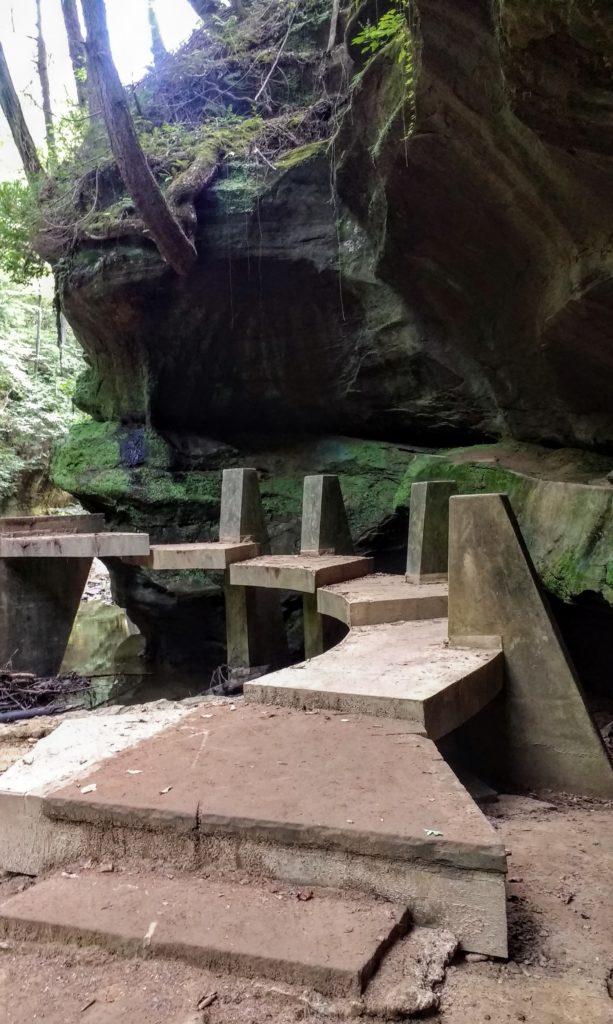
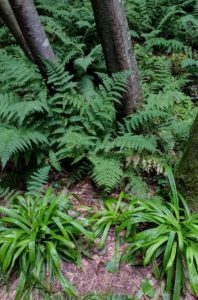
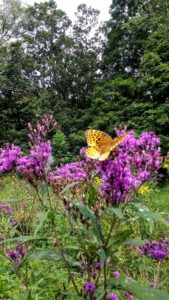
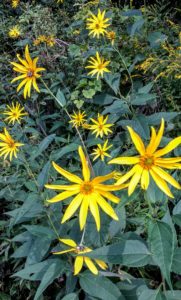
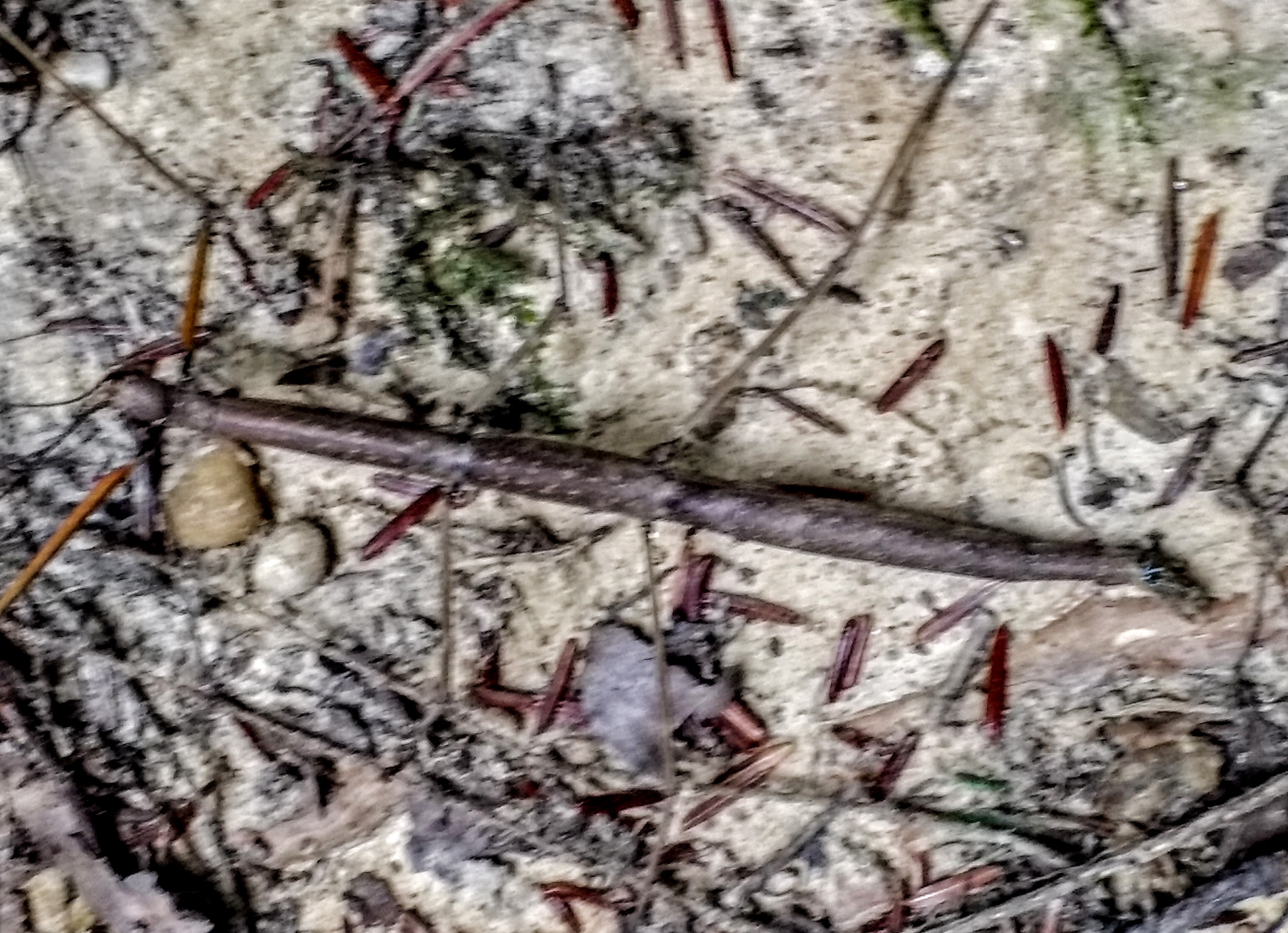
Thank you for the wonderful travelogue. Though I’ve heard about Hocking Hills for years your description is encouraging me to make my first visit there.
Cool! Have a great time! It’s very popular in the fall…. make a reservation now. We stayed at the Holiday Inn Express just outside of Logan. If you are a larger group you might want to rent one of the many cabins in the area. Also check out Athens, Ohio, home of the Ohio University. And the paypaw festival is coming up the end of September. Lot’s to see and do….just ot all in one place
Oh, My! Thank you so much for this journey! We explored some of this territory 20 years ago and had forgotten how magnificent it was. Time to return and meander into new and old paths.